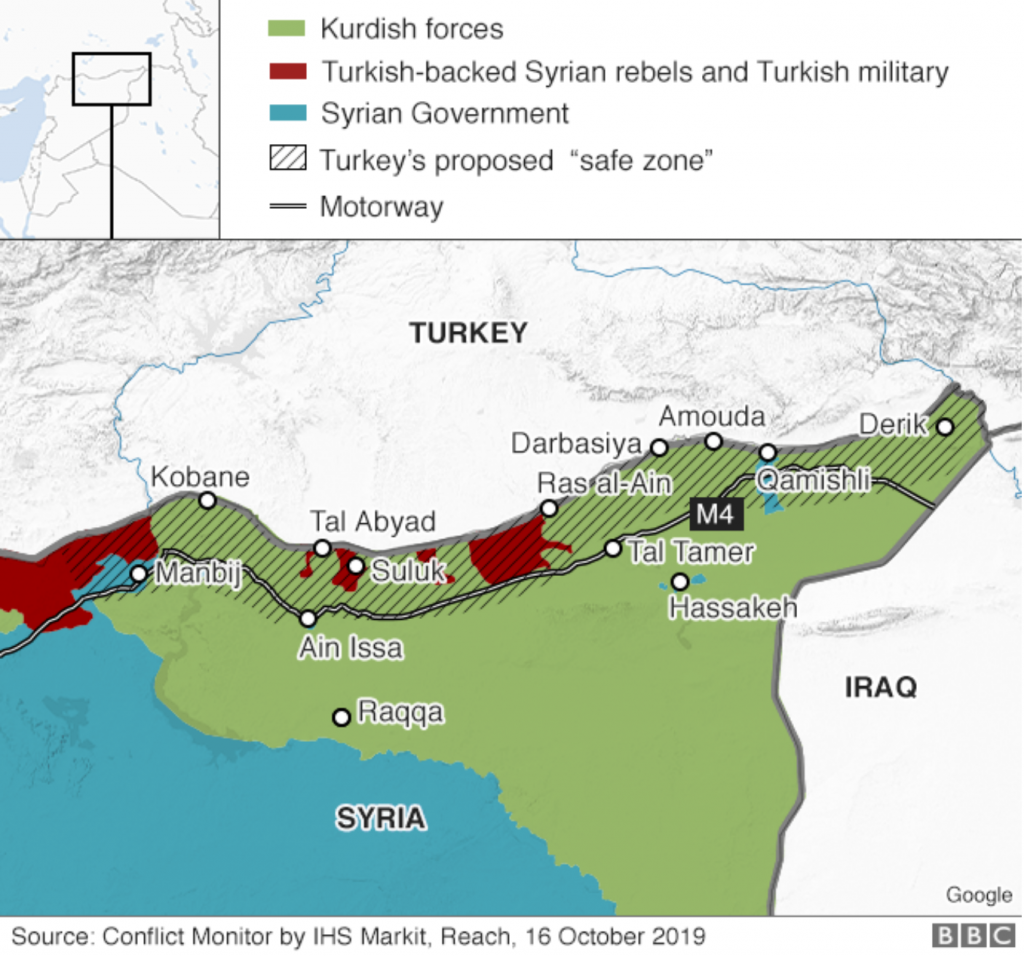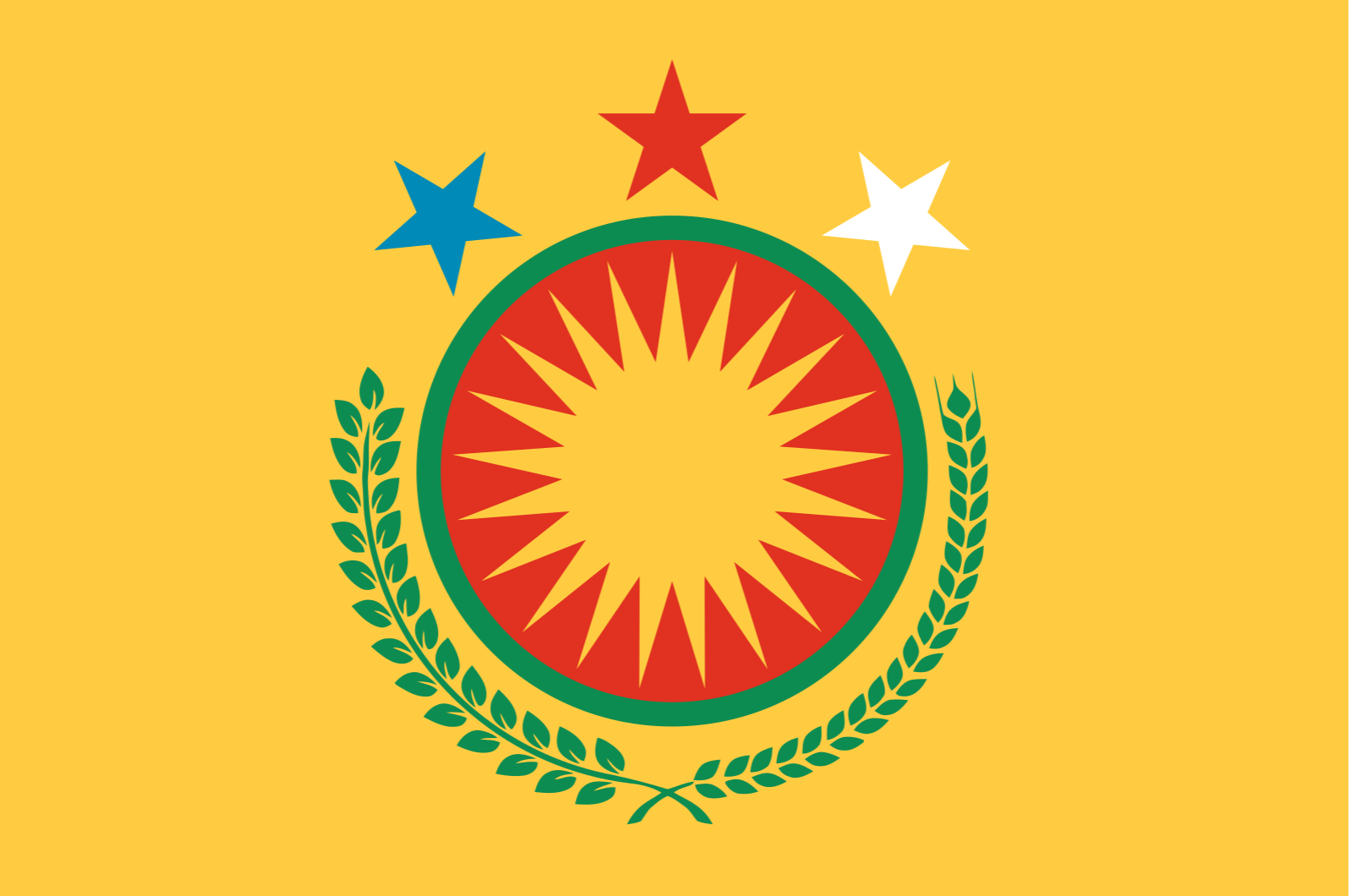On the 24th of September 2019, the Turkish president, Recep Tayyip Erdoğan gave a speech before the General Assembly of the UN, in which he proposed the establishment of a safe zone that would be 30 kilometres deep and 480 kilometres long, stretching along the northern border of Syria (Map 1). The safe zone would host up to 3 million refugees currently living in Turkey, Lebanon and Jordan.
He told the UN: “If this safe zone can be declared, we can resettle confidently somewhere between 1 to 2 million refugees. Whether with the U.S. or the coalition forces, Russia and Iran, we can walk shoulder to shoulder, hand in hand so refugees can resettle, saving them from tent camps and container camps.”

His proposal was viewed as controversial as northern Syria being inhabited by Kurds, whose armed units Turkey calls terrorist, saw the idea as a Turkish land grab. The Kurds also fear that many of the Syrians that might be placed in the safe zone are not native to north-east Syria, which would cause displacement of the Kurdish culture. Between 25 and 35 million ethnic Kurds inhabit a parts of Turkey, Iraq, Syria, Iran and Armenia. They have never had a widely-recognised permanent state of their own. Since 2011, Kurdish forces have been fighting on the Syrian-Turkish border regions with hope to secure the establishment of a Kurdish state.
The problem with the creation of safe zones is that the term “safe zone” does not exist under the recognition of international law, and thus can take on different meanings. Generally speaking, safety zones, also known as “safe zones” or “safe areas”, are territories free from military forces’ deployment or attacks, introduced upon an agreement between the parties to the conflict. In this case, there seems to be little to no agreement between the parties, which is further aggravated by the fact that some parties, such as rebel and terrorist groups, lack a centralised authority that would be able to discuss such an agreement.
Moreover, the failure of past safe zones in Syria does not bring positive thoughts into the discussion about new ones. Four de-escalation zones were established in the Idlib region in 2017 in rebel-held areas. They were protected by the presence of Turkish, Iranian and Russian observation posts on the opposing sides on the line separating governments forces from rebel forces; the purpose was to prevent escalation of the conflict and protect civilians. The zones were seized by government forces by January 2019.
Another problem is that, after the withdrawal of the U.S. Army that was ordered by President Donald Trump on 13 October, the fighting between the Kurds and the Turks has become even more intense, with northern Syria being the region most affected by it. Most attacks are accredited to the Turkish side, with 17 civilian deaths caused by them confirmed, but the Kurds are not without blame themselves.
The creation of a safe zone in Syria seemed unlikely at the time when it was proposed by Erdoğan, but now it seems close to impossible, given the recent development that aggravated the tensions between the warring parties.


Join the conversation!